As the definition of Europe as a political and cultural entity continues to evolve, so many of our neighbouring countries become more familiar to us. Numerous nations which less than 25 years ago were behind the seemingly impenetrable Iron Curtain are now well-trodden destinations due to their inclusion in the European Union.
But while the EU has grown and extended eastwards, there are still some countries which remain unfamiliar with many travellers. This is especially true of some of the countries which have historically been allied closely to Russia – either in the days of its empire, or in later Soviet times.
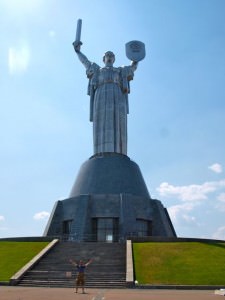
One of these is Ukraine, a country of some real contrasts, and one which has the potential to become more familiar to a far greater number of people in the light of co-hosting the Euro 2012 football championships. But while Russia might be painted in the popular imagination by the image of Cossacks (actually Ukrainian) dancing the heel-squatting gopak (again, Ukrainian) on Red Square, Ukraine might seem strangely anonymous.
And this illustrates the problem; it can be difficult to separate out the national characteristics from its bigger and better known brother. Churchill famously said that Russia was a ‘riddle wrapped in a mystery inside an enigma’ and the same could be said for Ukraine. Luckily for me, I’ve had the chance to try and unravel this particular mystery, as I’ve spent some time there over the past few years with my Ukrainian wife, and if it’s not an obvious country to fall in love with, there’s certainly an honesty and charm that can get under your skin.
Divided loyalties?
Perhaps reflecting the fact that Ukraine is located at the point where the EU ends, the recent history of the country – particularly since its popular democratic ‘Orange Revolution’ in 2004 – is one of divided loyalties. The west of the country, including capital city Kiev, generally favours the Ukrainian language, is more conscious of Ukrainian nationalism, and looks more towards Europe. In comparison, the industrial east, where Russian is the daily language, tends to have a much warmer attitude to Russia – something which goes back centuries to when the country was effectively split down the centre between the Polish and Russian empires.
And this legacy means that there is a huge variation in the regions of this large country – which is all to the good for tourists. Here are some of the highlights:
Kiev – Ukraine’s golden-domed capital is a huge city of sparkling monuments. Based on the broad Dnieper river, Kiev boasts the impressive Independence Square – scene of the peaceful 2004 electoral demonstrations which overturned the result of a presidential election – along with beautiful religious complexes, such as the St Sofia cathedral and Lavra monastery with its subterranean passages. Then there’s the buzzing main Khreschatyk Street, the charming, winding Andriyivsky Uzviz (Descent), and the steep, leafy banks of the river. Seek out gems such as the quaint National Museum of Medicine, but consider giving the neglected Kyiv Botanical Gardens a miss – Kew it isn’t.
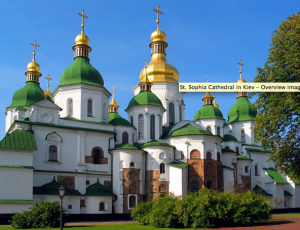
Lviv – With a mix of Renaissance and Baroque styles (to name just two), Lviv is a Unesco World Heritage-listed city, which provides good evidence for western Ukraine’s heritage as part of the Polish Empire – as does the central European-style coffee shop culture.
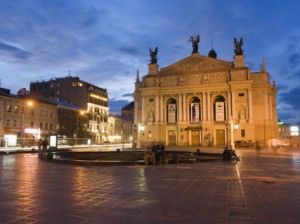
Odessa – The raffish Black Sea port city of Odessa is a cosmopolitan melting pot, with its sandy beaches set against the backdrop of beautiful Neoclassical architecture – famous to film fans for the iconic and moving sequence from Battleship Potemkin, set on the breathtaking Potemkin steps. Add in sandy beaches and uproarious nightlife, and you have an intriguing city which feels like none other in Ukraine.

Crimea – The Crimea is rightly famed as a tourist destination – though it perhaps deserves to be better known outside the former Soviet Union countries. Its pebbly beaches – which initially struck me as being more Brighton than Black Sea – attract the crowds, but the spectacular, rugged scenery is more compelling.
Donetsk – The capital of the eastern Donets mining basin is far from a traditional tourist destination, but my wife’s home city and its magnificent Donbass Arena were revamped for Euro 2012. This is a city of contrasts and one to watch for the future; I personally can’t wait to go back later this summer and see how it’s doing after its Euro makeover.
Travelling
I’ve flown to Ukraine from both Gatwick and Heathrow, transferring in Munich to go to Donetsk, or flying direct to Kiev. An alternative for the more adventurous is travelling over the border by train from one of the many EU countries which shares a border with Ukraine. Roads can be poor – though some have been improved ahead of Euro 2012. Travel can be relatively slow, though it is inexpensive, using the frequent cross-country bus services.
Something to bear in mind is that even the relatively cosmopolitan Kyiv has not truly developed a tourism culture – something which is generally accepted as being a hangover from the Soviet past. It’s certainly something you get used to, but can be surprising at first, especially in an expensive restaurant, where most of us would expect a certain amount of grace and pampering.
By contrast, if you are invited to someone’s home, I can guarantee a warm reception. One of my fondest memories is sitting with my parents in a shabby park, and being invited to the home of a complete stranger who happened to be passing by, to eat freshly picked mushrooms.
Remember that while there are ways to get away for less if you do your research, one thing you shouldn’t economise on is travel insurance. Another possible way to make some savings is by shopping around in advance for your foreign currency for Ukraine .
This is a sponsored post by Guest Blogger William David on behalf of Sainsbury’s Bank
ends
Remember, never travel without travel insurance! And never overpay for travel insurance!
I use HeyMondo. You get INSTANT quotes. Super cheap, they actually pay out, AND they cover almost everywhere, where most insurance companies don't (even places like Central African Republic etc!). You can sign-up here. PS You even get 5% off if you use MY LINK! You can even sign up if you're already overseas and traveling, pretty cool.
Also, if you want to start a blog...I CAN HELP YOU!
Also, if you want to start a blog, and start to change your life, I'd love to help you! Email me on johnny@onestep4ward.com. In the meantime, check out my super easy blog post on how to start a travel blog in under 30 minutes, here! And if you just want to get cracking, use BlueHost at a discount, through me.
Also, (if you're like me, and awful with tech-stuff) email me and my team can get a blog up and running for you, designed and everything, for $699 - email johnny@onestep4ward.com to get started.
Do you work remotely? Are you a digital nomad/blogger etc? You need to be insured too.
I use SafetyWing for my digital nomad insurance. It covers me while I live overseas. It's just $10 a week, and it's amazing! No upfront fees, you just pay week by week, and you can sign up just for a week if you want, then switch it off and on whenever. You can read my review here, and you can sign-up here!





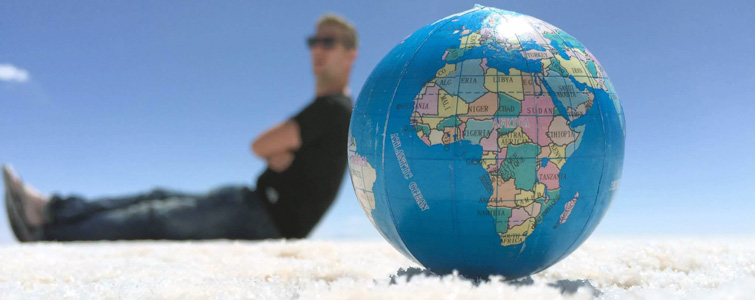


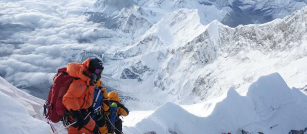




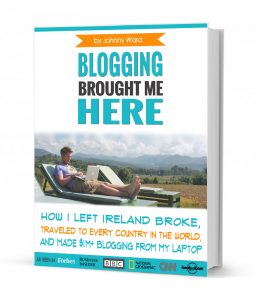 As you know, blogging changed my life. I left Ireland broke, with no plan, with just a one-way ticket to Thailand
and no money. Since then, I started a blog, then a digital media company, I've made
more than $1,500,000 USD, bought 4 properties and visited (almost) every country in the world. And I did it all from my laptop as I
travel the world and live my dream. I talk about how I did it, and how you can do it too, in my COMPLETELY FREE
Ebook, all 20,000
words or so. Just finish the process by putting in your email below and I'll mail it right out to you immediately. No spam ever too, I promise!
As you know, blogging changed my life. I left Ireland broke, with no plan, with just a one-way ticket to Thailand
and no money. Since then, I started a blog, then a digital media company, I've made
more than $1,500,000 USD, bought 4 properties and visited (almost) every country in the world. And I did it all from my laptop as I
travel the world and live my dream. I talk about how I did it, and how you can do it too, in my COMPLETELY FREE
Ebook, all 20,000
words or so. Just finish the process by putting in your email below and I'll mail it right out to you immediately. No spam ever too, I promise!

Got a question? Wanna comment? I'd love to hear from you
Comments are closed.